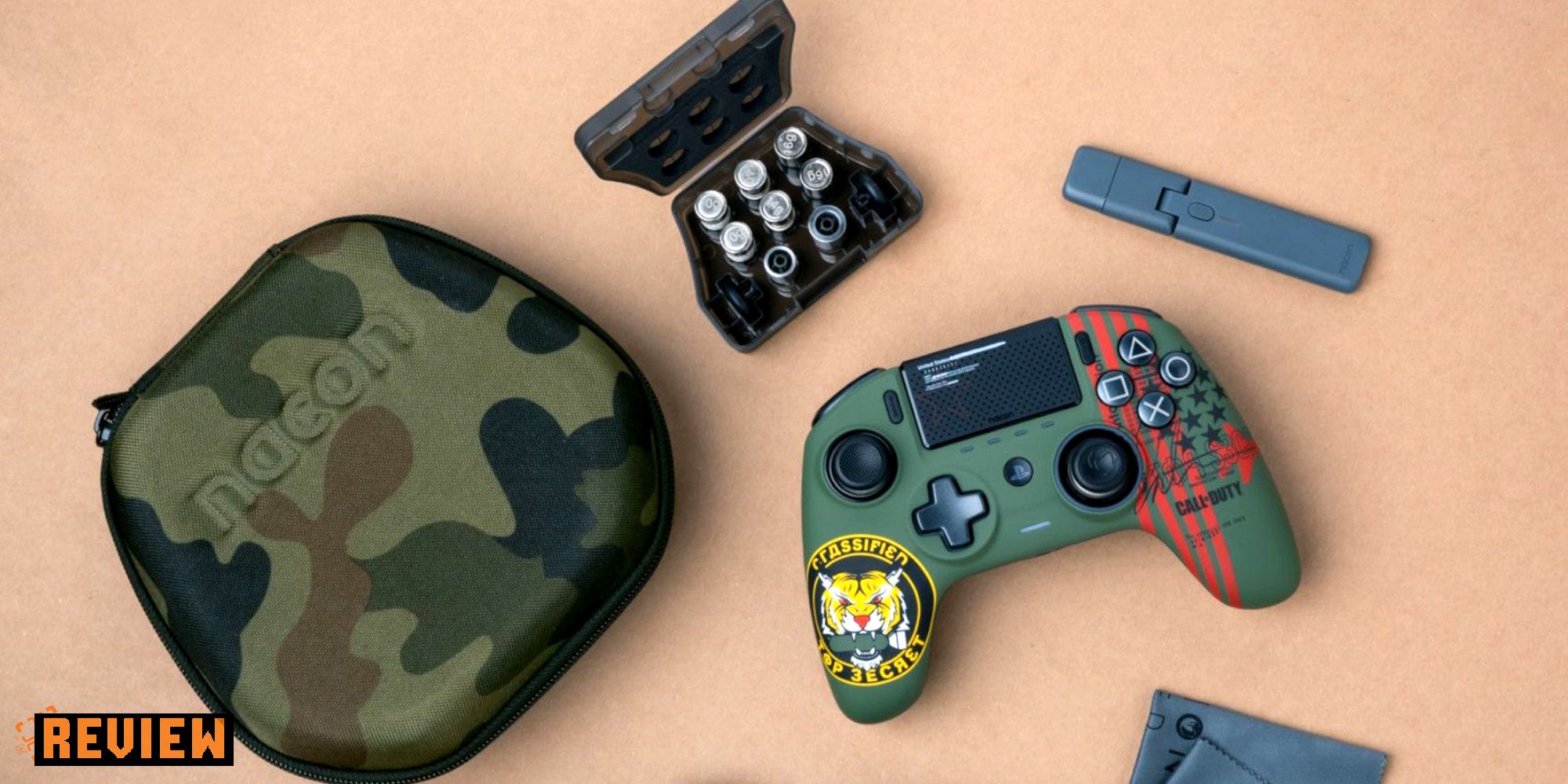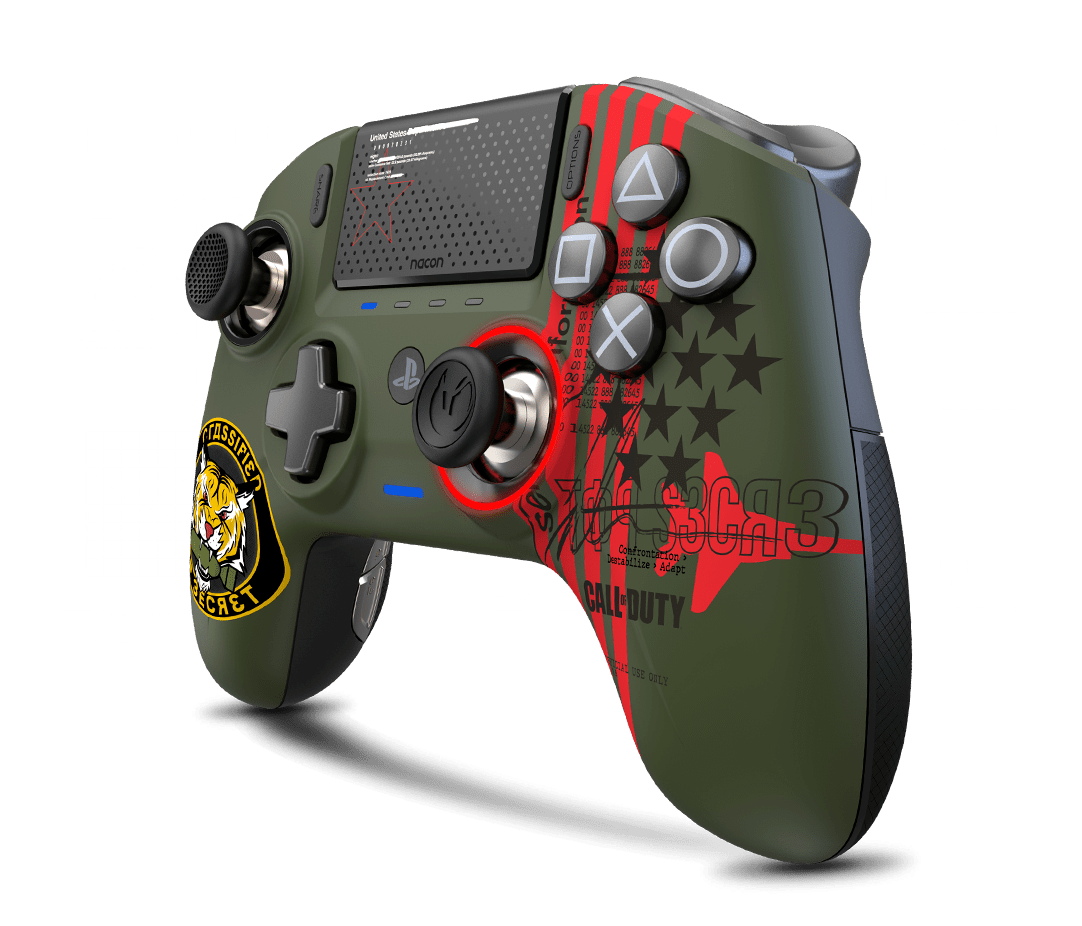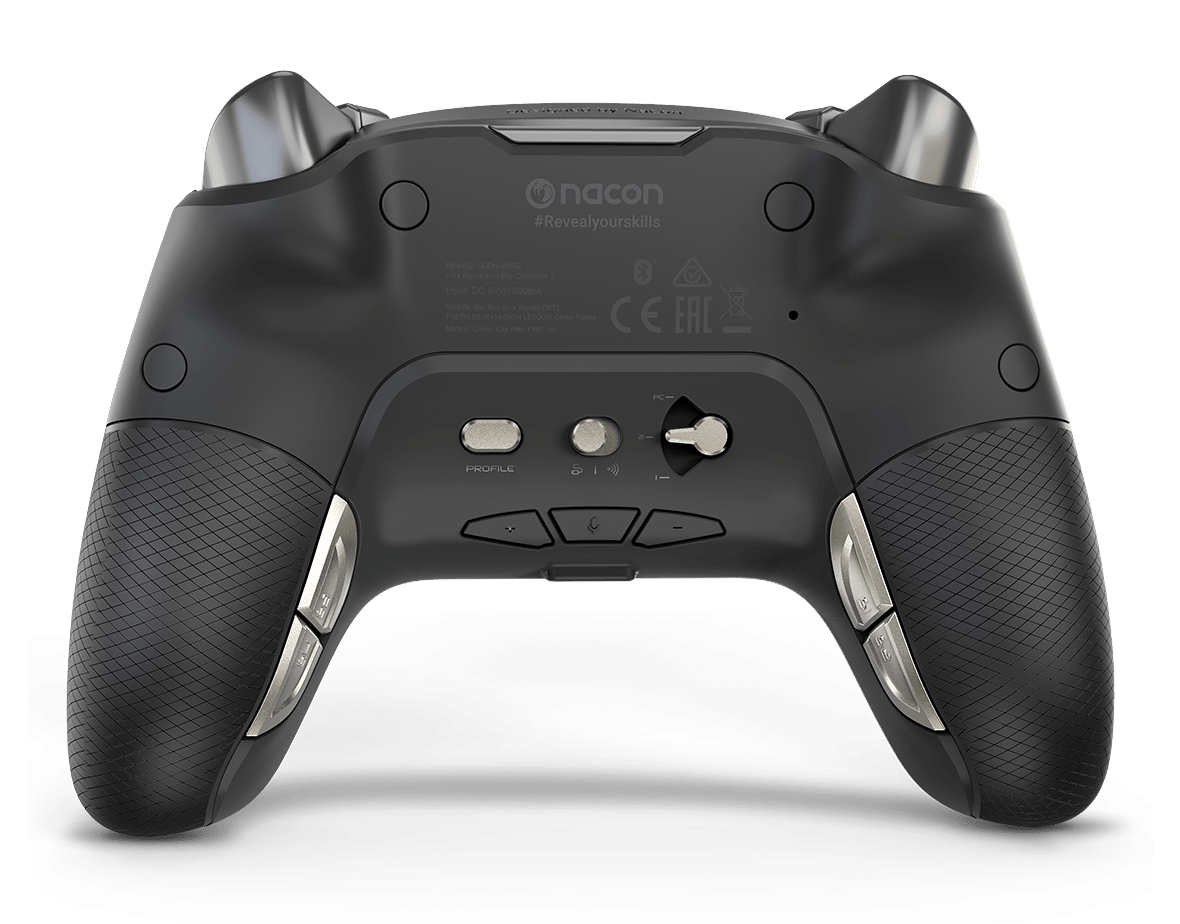I had expected the pro controller market to contract for a bit while manufacturers wrapped their heads around next-gen controllers, but I've seen more innovative new pro controllers in the last month than I had all year. Today I'm taking a look at Nacon's first wireless pro controller, the Revolution Unlimited Pro. In terms of features, the Revolution has more unique bells and whistles than any other pro controller I've seen. Most importantly, the Revolution perfects the back button placement, and I sincerely hope other pro controllers will follow suit. Ultimately, not every unique feature of the Revolution is actually useful, but the things it gets right are enough to make it an easy recommendation.
Just to get this long, unwieldy name out of the way: the controller I'm reviewing today is called the Nacon Revolution Unlimited Pro Controller Call Of Duty Edition. It functions identically to the non-Call of Duty Edition, but it has a slick CoD paint job and comes with a camo hardshell carrying case. For what it's worth, I love the Cold War artwork. It's a bit busy, but it really makes it stand out from the crowd.
There's a baseline list of features that we can expect from any pro controller. The Revolution offers customizable profiles, volume controls, improved button actions, four back buttons, and a desktop client that allows you to change button mapping and adjust the sensitivity of control stick and triggers, among other things. The software isn't great, in fact, I wasn't able to change the button mapping with it at all. I followed a video tutorial but clicking the input fields and pressing the buttons on the controller would not remap them. Luckily, you can reprogram the buttons without the software. If you plan on getting into the nitty-gritty customization options, fair warning that the software might give you a bit of a headache.
Beyond the usual suspects, the Revolution actually has some really unique features. There's are two LED rings around the right control stick that are individually addressable. In the software, you can program the color and the lighting pattern of the light ring just as you would a mouse or keyboard. It's a great bit of customization that you can also use to differentiate your four different profiles. I love customizable lights and I'm surprised this is the first time I've seen it.
The real standout feature is the position of the back buttons. Positioned low on the grips and flush with the controller, these are the best positioned and most ergonomic back buttons I've ever seen. I've been begging for back buttons on the grips for a while and I'm so glad to see it's as good as I always hoped it would be. It's a little hard to tell which button is which by feel alone, but the beauty of this design is that once you find a comfortable position for your middle and ring finger, they don't ever need to move them. This is so much better than long paddles or buttons on the backplate of the controller.
The other differentiators, I'm afraid, don't really impress me. The Revolution isn't a modular controller like the Scuf Vantage 2 or the Thrustmaster EswapX. The only removable or replaceable parts of the controller are the tops of the control stick, it comes with both convex and concave, and these little metal spacers you can put around the control sticks. The idea is you can increase the diameter of the sticks so that they have less throw when your game doesn't require you to push them all the way to the edges. I could see it being potentially beneficial for fighting games but it's such a marginal difference, I don't think it's really worth it to keep track of these tiny spacers and swap them in and out.
If that seems like a niche feature, the Revolution takes this level of fine-tuning a degree higher with interchangeable weights. The controller comes with a box of six small weights ranging from 10 grams to 16 grams that can be inserted into the handles of the controller, one on each side. I've championed weight customization on gaming mice in the past because the weight of a mouse has a big impact on how fast you can move it and pick it up. With a controller, I'm really struggling to understand what making it heavier does for you. Even with the full 32 grams inserted it really doesn't feel that different, nor does it change the balance of the controller much. None of the marketing for the Revolution tries to explain why you would want to make the controller heavier either. I'm pretty dumbfounded by this feature. It works as advertised, I'm just not sure who it's for.
That being said, the weight doesn't take anything away from the controller. It feels great to use and the back buttons are perfect. It doesn't have the clicky mouse-like face buttons like the Razer Wolverine or the EswapX, and you can't change the travel distance of the triggers, so you may find more usefulness from another brand. In terms of visual style and ergonomics though, the Revolution Unlimited Pro leads the pack.




